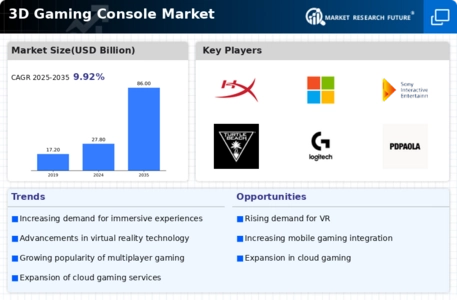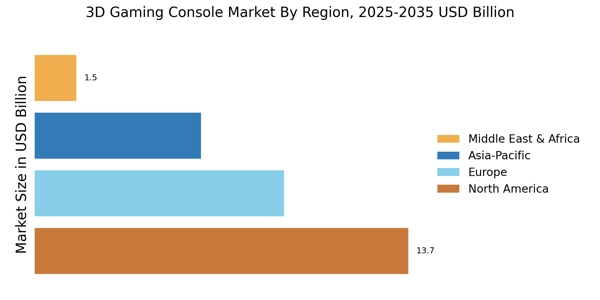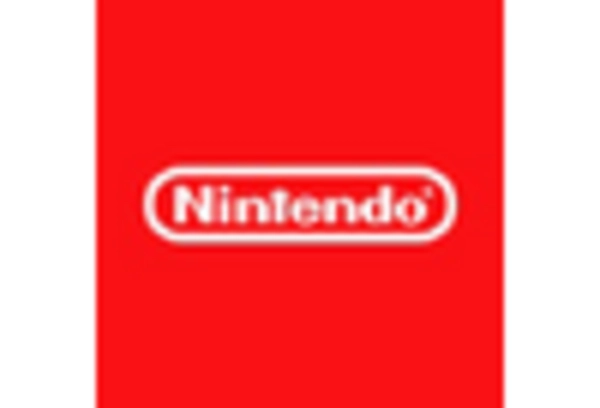Growing Popularity of Esports
The growing popularity of esports is a key driver in the 3D Gaming Console Market. As competitive gaming gains mainstream recognition, the demand for consoles that can support high-performance gaming is increasing. Esports events attract millions of viewers and participants, creating a lucrative market for console manufacturers. In 2025, the esports industry is projected to generate revenues exceeding 1.5 billion USD, with a substantial portion of this revenue stemming from console gaming. This trend encourages manufacturers to develop consoles that cater to the needs of competitive gamers, such as enhanced processing power and low latency. The rise of esports is likely to continue influencing consumer preferences and driving growth in the 3D Gaming Console Market.
Rise of Online Gaming Communities
The proliferation of online gaming communities is significantly influencing the 3D Gaming Console Market. As players increasingly engage in multiplayer experiences, the demand for consoles that support online connectivity and social interaction is on the rise. This shift has led to the development of features such as cross-platform play and integrated social media sharing, which enhance user engagement. Recent data suggests that nearly 70% of gamers participate in online communities, highlighting the importance of connectivity in console design. Consequently, manufacturers are focusing on creating consoles that facilitate seamless online experiences, thereby driving growth in the 3D Gaming Console Market. This trend underscores the necessity for consoles to adapt to the evolving landscape of gaming.
Advancements in Graphics Technology
The 3D Gaming Console Market is experiencing a surge in demand due to rapid advancements in graphics technology. Enhanced graphics capabilities, such as ray tracing and high dynamic range (HDR), are becoming standard features in new consoles. These innovations not only improve visual fidelity but also create immersive gaming experiences that attract a broader audience. As of 2025, the market is projected to grow at a compound annual growth rate (CAGR) of approximately 10%, driven by these technological enhancements. Consumers are increasingly seeking consoles that offer superior graphics, which is reshaping purchasing decisions. This trend indicates that manufacturers must prioritize cutting-edge graphics technology to remain competitive in the 3D Gaming Console Market.
Emergence of Virtual Reality Experiences
The emergence of virtual reality (VR) experiences is reshaping the 3D Gaming Console Market. As VR technology becomes more accessible and affordable, consumers are increasingly seeking consoles that offer VR compatibility. This trend is indicative of a broader shift towards immersive gaming experiences that engage players on a deeper level. By 2025, it is anticipated that the VR gaming market will surpass 30 billion USD, with a significant portion of this growth attributed to console-based VR systems. Manufacturers are responding by integrating VR capabilities into their consoles, thereby expanding their market reach. The integration of VR technology is likely to redefine gaming experiences, making it a pivotal driver in the 3D Gaming Console Market.
Increased Investment in Game Development
The 3D Gaming Console Market is benefiting from increased investment in game development, which is crucial for sustaining consumer interest. As developers allocate more resources to create high-quality, immersive games, the demand for advanced consoles that can support these titles grows. In 2025, the global gaming industry is expected to reach a valuation of over 200 billion USD, with a significant portion attributed to console gaming. This influx of capital allows for the production of exclusive titles that can only be played on specific consoles, further driving sales. The interplay between console capabilities and game development investment is vital for the continued expansion of the 3D Gaming Console Market.


















Leave a Comment